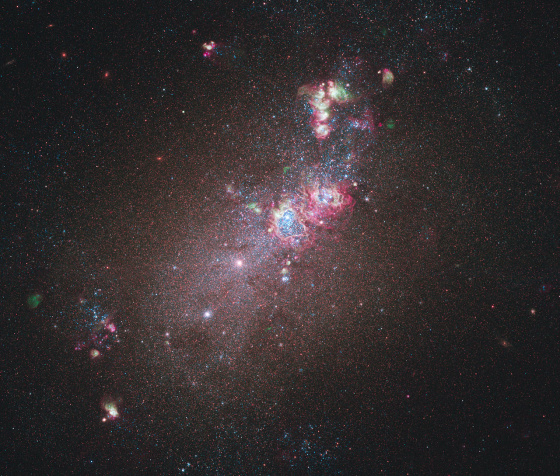The Hubble telescope captured this crystal-clear optical and near-infrared view of a dwarf galaxy that is glowing brightly with hot, young stars and gas clouds, making it an ideal laboratory for studying star formation and evolution, astronomers reported Thursday.
The image shows that even in the scale of galaxies, great things come in small packages.
"Dwarf galaxy NGC 4214 may be small, but what it lacks in size it makes up for in content. It is packed with everything ... an astronomer could ask for," the European Space Agency noted in an image advisory.
The galaxy is located around 10 million light-years away in the constellation of Canes Venatici ("The Hunting Dogs"). Inside the hole of the large, heart-shaped cavity at the center of the image lies a large cluster of massive, young stars ranging in temperature from 10,000 to 50,000 degrees C. Their strong stellar winds blew the cavity clear of gas, which prevents any further star formation.
Other regions of the galaxy contain large amounts of star-forming gas, seen glowing red in this image. The area with the most hydrogen gas, and thus the youngest cluster of stars, about 2 million years old, lies in the upper portion of this image. This region is visible due to ionization of the surrounding gas by ultraviolet light of a young cluster of stars within.
Clusters of much older, red supergiant stars in a late stage of their evolution are also dotted across the galaxy. The variety of stars at different stages in their evolution indicate that the recent and ongoing starburst periods are by no means the first, and the galaxy's abundant supply of hydrogen means star formation will continue into the future.
The image was made with the Wide Field Camera 3 instrument on the Hubble Space Telescope.
John Roach is a contributing writer for msnbc.com. Connect with the Cosmic Log community by hitting the "like" button on the Cosmic Log Facebook page or following msnbc.com's science editor, Alan Boyle, on Twitter (@b0yle).
